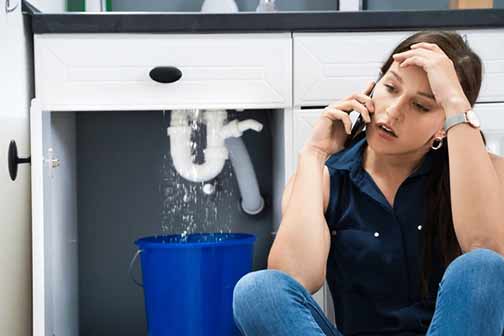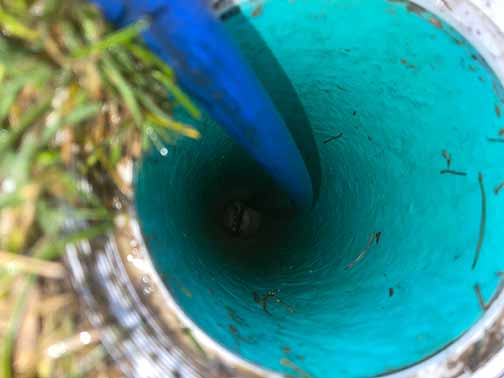
A plumbing emergency is any plumbing problem that denies you access to one or more of your plumbing fixtures and makes part or all of your home unlivable, says TrueNest Property Management.
One of the worst plumbing emergencies to have in your home is a drain emergency. This is when your drains stop working, preventing the normal use of sinks, showers, bathtubs, or toilets. A drain emergency can cause sewage to flow backward and enter your home.
What are some examples of common drain emergencies in the house?
Common drain emergencies in the home
- Clogged sinks: A result of debris buildup inside the drainpipes.
- Overflowing toilets: When repeated attempts to flush a clogged toilet causes its contents to overflow.
- Clogged shower/bathtub: When bathwater refuses to exit the shower or bathtub.
- Sewage backup: When the contents of a sewer line flow backward and enters the home.
The common factor in these drain emergencies is they are all the result of clogs/blockages in your drain line. What are the signs that these problems are brewing inside your drain lines? If there is an imminent emergency in your drainage system, you may see one or all of the following signs:
- Bad odors from your drains and plumbing fixtures
- Odd sounds – bubbling and gurgling – each time you flush the toilet
- Multiple slow drains in the home
- Stubborn drain clogs that refuse to go away, despite your best efforts
- Standing water in the yard, patches of wet ground, or overly green vegetation
- Constant toilet issues such as sluggish flushing and frequent clogs
- Pest invasion of your yard and home; roaches, fruit flies, flies, etc.

Professional drain cleaning; the best cure for drain emergencies
To solve a drain emergency in your home you need a way to clear out the debris inside the pipes. But given that drain lines are mostly underground and therefore inaccessible, how do you do this? The most effective way to clear out a drain line is to use professional drain cleaning.
What is professional drain cleaning?
These are a range of methods used by professional plumbers to remove the buildup inside a clogged or blocked drainage pipe or sewer line. These methods offer you a way to reach into the pipes to clean them, letting you achieve results that are impossible by any other means.
The most effective professional drain-cleaning methods and strategies are:
Hydro jetting
Hydro jetting uses high-pressure water delivered into the deepest recesses of a sewer line or drainage pipe. This is done by inserting a flexible hose with a steel nozzle into the blocked drainage line before blasting water at very high pressures into the line. Hydro jetting will get rid of sludge, scale, and tree roots.
Sewer rodding
Like hydro jetting this method also uses a flexible pipe. But these are flexible pipes that are connected end-to-end to extend their reach into the drainpipe. At the business end of the line is a motorized cutting head used to clear away the debris. Sewer rodding will remove sludge and any tree roots inside your drains.
Sewer camera inspection
This is not a drain cleaning method but an inspection method that is usually done before drain cleaning. A sewer camera inspection is used to determine the nature of the blockage inside the line and pinpoint its exact location. It uses a specialized waterproof camera which is inserted into the line.
The advantages of using these methods, versus short-term solutions like chemical drain cleaners, include
- Accurate analysis of the kind of buildup inside the clogged line
- Efficient removal of the debris inside the line, with long-term results
- Minimal risk of damage to the pipes in your drainage system
- Optimal performance and improved lifespan of the cleared drainage line
- Drastic reduction in the incidence of drainpipe leaks and damage
- Massive cuts in your home’s drainage maintenance costs
How often should you clean your drainage system?
Emergency drain cleaning is the worst way to maintain your drains; it is a costly and less effective strategy. Why is this? Because emergency drain cleaning is a reactive strategy that doesn’t give you control over what happens in your drainage system. There is a better method.
The right way to deal with drainage issues is with a preventive maintenance plan. Instead of waiting until the drains are clogged (that is, you have an emergency), you clean your drains at specific intervals. You do this regardless of whether the drain is clogged or not.
What are the benefits of this method? Preventive maintenance is proactive. By cleaning your drains on a schedule, you interrupt the processes that cause buildup inside the drains, thus reducing (or even eliminating) the risk of drain emergencies in your home.
How often should you do this?
As a rule, you want to clean your drainage system once a year. However, before cleaning the line, it is a good practice to do a sewer camera inspection. This will let you know the current state of your line, allowing you to deal with problems before they get worse.
Finally, is it a good idea to do hydro jetting or sewer rodding yourself? Although hydro jetting and sewer rodding equipment are commonly available for rent, these are DIY methods. There are other considerations that you may not think of when jetting or rodding your sewer line. But a professional plumber will.

